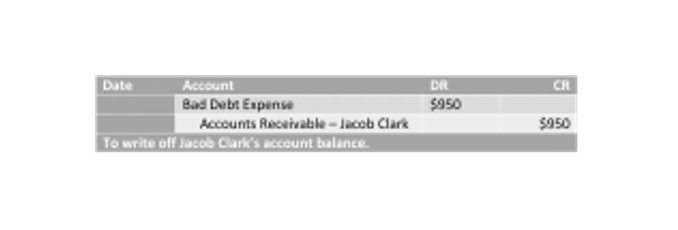
Everything transpiring between a patient and the mental healthcare provider should be in the medical record. A patient’s medical record determines what is billed for the mental health service, which means that all required information must be adequately documented. This medical record will help support the diagnosis and procedure code that is billed to insurance. At the heart of mental health billing is the use of accurate CPT (Current Procedural Terminology) codes. Knowing the specific codes for different types of therapy sessions, diagnostic assessments, and other mental health services is essential. The accuracy of these codes directly impacts reimbursement rates and minimizes the likelihood of denied claims.
A telltale sign that who you’re evaluating isn’t a leading mental health clearinghouse is if they don’t have experience integrating with the EHR your organization’s using. However, you’re in a unique scenario within the mental health space where you have to deal with MCOs, mental health EHRs and state-level government ordinances. Thus, if you don’t have a clearinghouse that has specific processes in place to help you with each of those mental health billing-related aspects, you should seek a new one.
How to Read Mental Health Eligibility Verification Data
You can work hard to submit your claims, and go above and beyond for it as well. You can discover how to appropriately bill insurance for treatments rendered by verifying this crucial element. The psychiatric diagnostic evaluation, also known as a psych evaluation, is typically performed to evaluate patient’s medical and mental health. The patient’s behavior, thought process, cognitive skills etc will be examined, and provider will devise a treatment plan based on the patient’s readiness and capacity to react to treatment.
- Thus, if you don’t have a clearinghouse that has specific processes in place to help you with each of those mental health billing-related aspects, you should seek a new one.
- Ensuring that all components of mental health billing are accurate and on time can be challenging.
- This is yet one more reason why mental health providers choose billing services like TheraThink to help.
- Alternatively, you can customize your billing process by outsourcing to a third-party partner to optimize your workflow and enhance your revenue cycle management (RCM) processes.
- We understand that it’s important to actually be able to speak to someone about your billing.
This is one reason why provider productivity can be so critical; they not only bring in revenue but help cover the cost of the staff needed to support them. To provide better service to patients, it is essential to pay more attention to treatment; a Psychiatric Diagnostic Review helps to create that therapeutic plan effectively. To provide quality-based treatment for any mental health issue, it is essential to have a solid foundation of diagnosis. Most insurance facilities suggest group psychotherapy because it is cost-effective than individual. If this group therapy is not beneficial for any individual, then it will be the responsibility of healthcare to provide medication support for that patient. For that treatment, the required cost gets reimbursement from the insurance service.
Step 5: Clearinghouse Rejections
To give you an example, there are public payers for every county in the state of Ohio that handle alcohol, drug addiction and mental health services (ADAMHS). The last step in the mental health billing process is to rework your denials and submit them for an appeal. Since you and your staff work within your PM/EHR daily, the most ideal process to submit mental health claims to all of your client’s payers is through it. Learn how to offload your mental health insurance billing to professionals, so you can do what you do best. Staffing shortages or turnover can disrupt billing operations, especially at smaller practices.
- Benefits are the amount of money or services provided and covered under an insurance policy.
- It also plays a vital role in maintaining people’s well-being and healing their emotional wounds.
- You will received EOBs in the mail along with a check for those dates of service.
- Request as many facts as possible, including the patients’ full legal names and current addresses.
Instead, outsourcing provides transparency and allows you to monitor your practice from an automated standpoint. Mental health billing is one of your most important tasks, yet it can be overwhelming and burdensome. Outsourcing these essential functions can reduce the administrative burden on your staff and speed up insurance claims processing. A VOB can help you avoid rejected claims from the insurance company as well as unpaid bills for the services you provide for your patient. This service may be provided with or without the patient’s presence and is occasionally reimbursed. It’s likely that the bulk of the solution provider’s clients are doctor’s offices.
Submit the claims the proper way
The first one is via contact details, which are available on an insurance card. Provider can easily connect with insurance service to get details about total coverage and benefits on insurance. The company is tech-focused and allows clients round-the-clock access to information such as claim status, client balances, authorization status, and more. Check out our guide to CPT codes for Family Therapy Billing, so you can improve mental health billing for dummies the efficiency of your medical billing process and receive accurate reimbursement at a much faster rate. In essence, while mental health billing and behavioral health billing share similarities, the latter encompasses a broader array of psychological services. Understanding their relationship is vital for practitioners, insurers, and policymakers working to improve access to comprehensive mental and emotional well-being care.

One or more of these problems — and many other variables — can make it difficult for mental and behavioral health providers to operate their practice efficiently. A lot of time and energy goes into filing a claim with medical billing for mental health services, taking away time from patients. Learning more about the mental health billing process can make it easier for you to spend more time and energy on your patients and less on inconvenient discrepancies.





